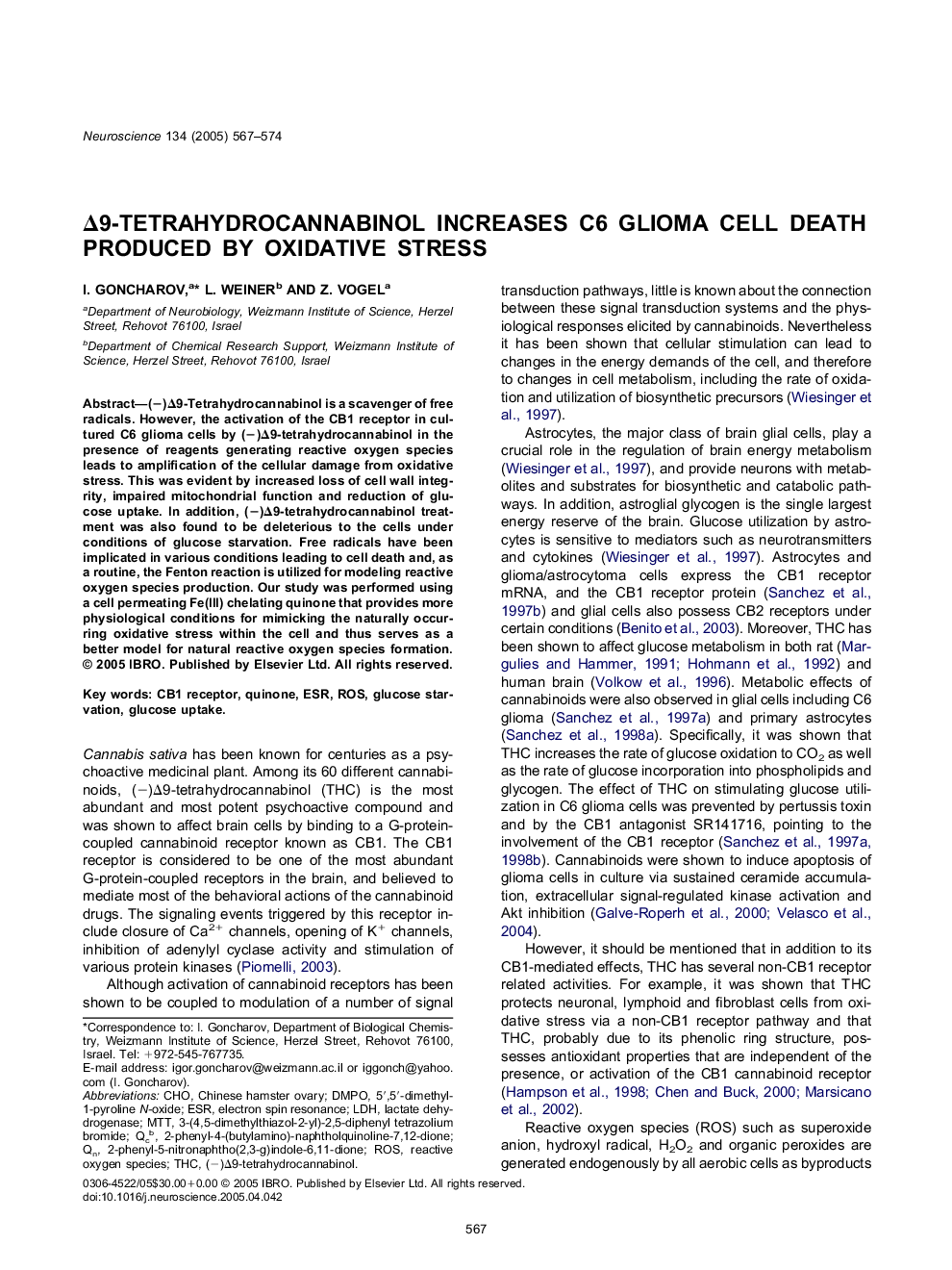| کد مقاله | کد نشریه | سال انتشار | مقاله انگلیسی | نسخه تمام متن |
|---|---|---|---|---|
| 9425737 | 1295889 | 2005 | 8 صفحه PDF | دانلود رایگان |
عنوان انگلیسی مقاله ISI
Î9-tetrahydrocannabinol increases C6 glioma cell death produced by oxidative stress
دانلود مقاله + سفارش ترجمه
دانلود مقاله ISI انگلیسی
رایگان برای ایرانیان
کلمات کلیدی
DMPOESRTHC3-(4,5-dimethylthiazol-2-yl)-2,5-diphenyl tetrazolium bromide - 3- (4،5-dimethylthiazol-2-yl) -2،5-difenyl tetrazolium bromideMTT - MTTROS - ROSCho - برایChinese Hamster Ovary - تخمدان هامستر چینیGlucose uptake - جذب گلوکزElectron spin resonance - رزونانس اسپین الکترونlactate dehydrogenase - لاکتات دهیدروژناز LDH - لاکتات دهیدروژناز به صورت مختصر شده LDH Quinone - کینون Glucose starvation - گلوکز گاستReactive oxygen species - گونههای فعال اکسیژنCB1 receptor - گیرنده CB1
موضوعات مرتبط
علوم زیستی و بیوفناوری
علم عصب شناسی
علوم اعصاب (عمومی)
پیش نمایش صفحه اول مقاله

چکیده انگلیسی
(â)Î9-Tetrahydrocannabinol is a scavenger of free radicals. However, the activation of the CB1 receptor in cultured C6 glioma cells by (â)Î9-tetrahydrocannabinol in the presence of reagents generating reactive oxygen species leads to amplification of the cellular damage from oxidative stress. This was evident by increased loss of cell wall integrity, impaired mitochondrial function and reduction of glucose uptake. In addition, (â)Î9-tetrahydrocannabinol treatment was also found to be deleterious to the cells under conditions of glucose starvation. Free radicals have been implicated in various conditions leading to cell death and, as a routine, the Fenton reaction is utilized for modeling reactive oxygen species production. Our study was performed using a cell permeating Fe(III) chelating quinone that provides more physiological conditions for mimicking the naturally occurring oxidative stress within the cell and thus serves as a better model for natural reactive oxygen species formation.
ناشر
Database: Elsevier - ScienceDirect (ساینس دایرکت)
Journal: Neuroscience - Volume 134, Issue 2, 2005, Pages 567-574
Journal: Neuroscience - Volume 134, Issue 2, 2005, Pages 567-574
نویسندگان
I. Goncharov, L. Weiner, Z. Vogel,